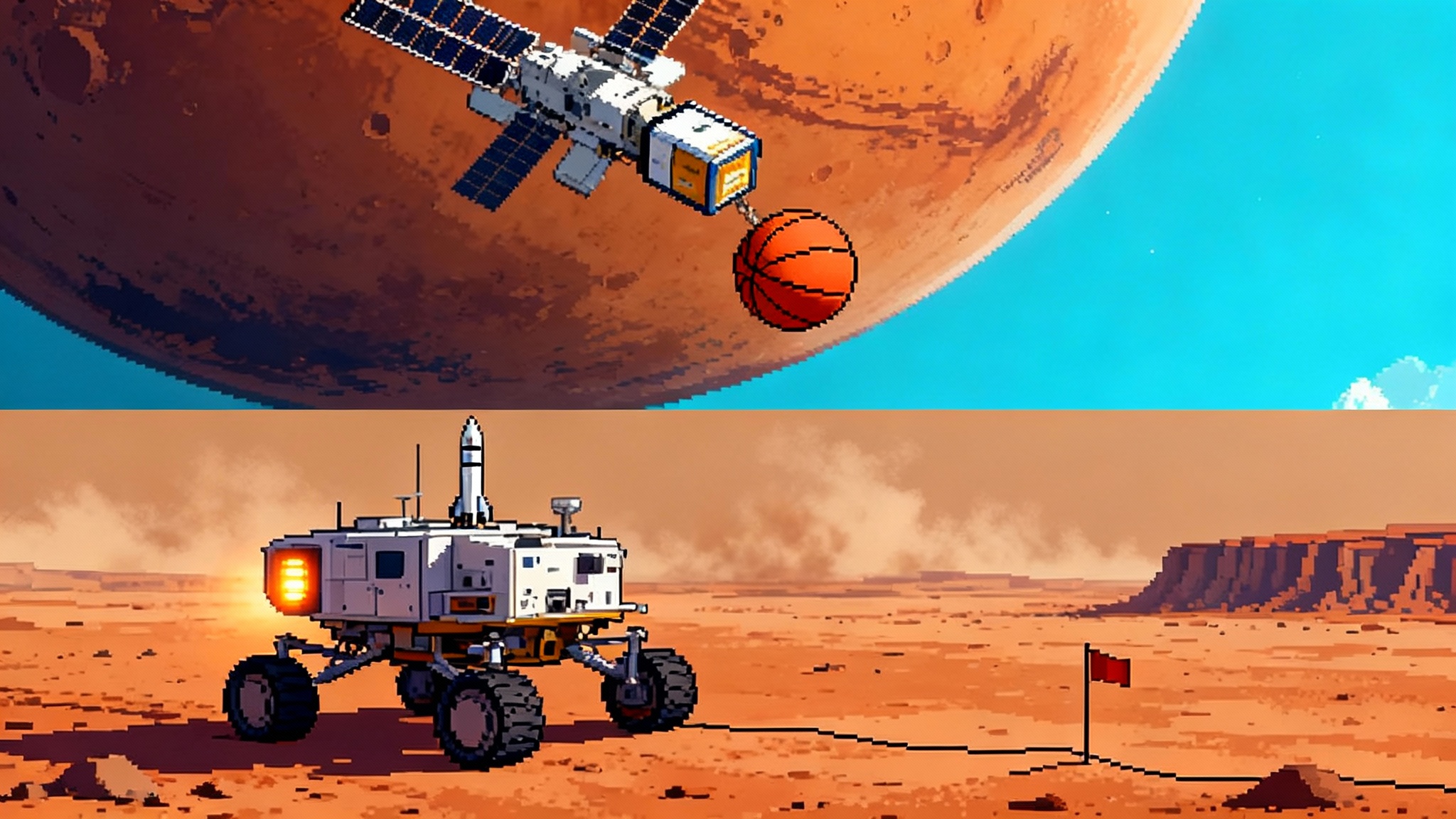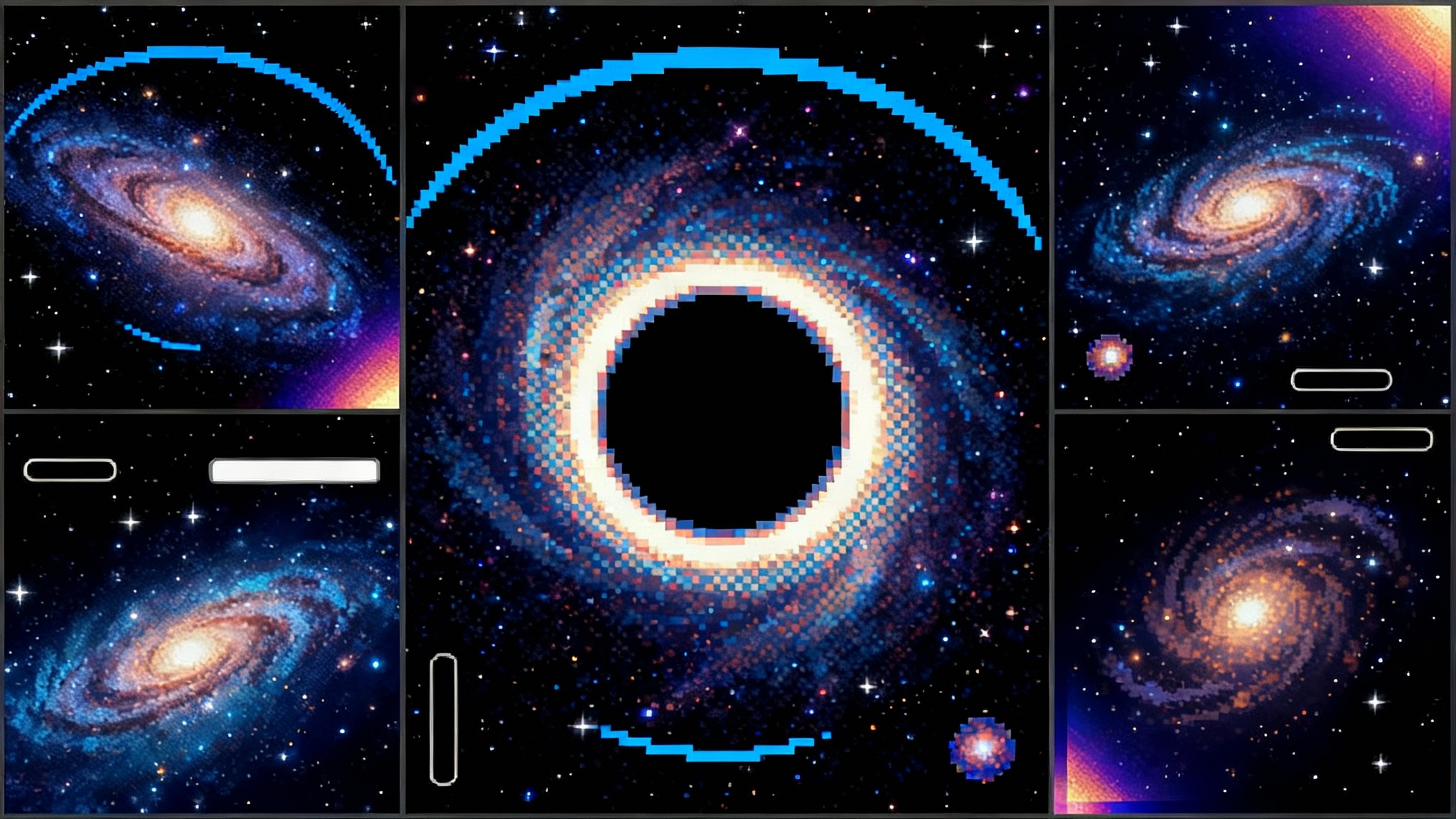Deep-Space Laser Links Arrive: DSOC’s 2025 Finale
NASA’s Psyche-borne DSOC wrapped in 2025 and showed that laser light can carry science across hundreds of millions of miles. Here is how optical links become the backbone of space data this decade and who turns them on first.

The moment the switch flips
Radio built the space age. Laser light will scale it. In September 2025, NASA’s Deep Space Optical Communications experiment aboard the Psyche spacecraft reached its finale, capping two years of trials that traded radio waves for tightly focused beams of near‑infrared light. With that, the agency effectively proved a new standard for talking to spacecraft far beyond the Moon. The question is no longer if lasers work in deep space. It is how fast the rest of the infrastructure can grow to make them routine. For context, see NASA’s DSOC mission page.
What DSOC actually proved
Think of an old copper landline compared to a modern fiber connection. Both carry conversations, but only one scales to high‑definition video, software updates, and entire archives. DSOC’s optical link showed that deep‑space communications can move from the copper era to fiber‑like performance.
- High data rates at interplanetary distances. DSOC streamed an ultra‑high‑definition clip from 31 million kilometers away at 267 megabits per second in December 2023, then continued to downlink at multi‑megabit rates from Mars‑like distances. Over the campaign, ground terminals received 13.6 terabits of data while also proving precise pointing, acquisition, and tracking in real operations.
- End‑to‑end integration with a real spacecraft. DSOC did not ride on a dedicated testbed. It lived on Psyche and demonstrated it could interface with conventional radios on the spacecraft while adding far more capacity when conditions allowed.
The technical core is simple in idea and hard in execution. Lasers operate at much higher carrier frequencies than radio, which lets you pack more bits into each second. Their beams also diverge much less, so more of the transmitted energy hits your receiver instead of spreading out into space. The trade is that tight beams demand micro‑radian pointing accuracy and exquisite timing, plus detectors that can count single photons through atmospheric turbulence.
The sprint now under way: ground and space
If DSOC is the proof, the next act is all plumbing. Space agencies and companies are racing to build the equivalent of on‑ramps and off‑ramps for light.
- Ground segment. Lasers dislike clouds. That is why site diversity is the new mantra. Optical ground stations are being placed at high, dry, widely separated locations to maximize clear skies and to hand off traffic between sites when weather rolls in. DSOC’s campaign relied on precision beacons from California’s Table Mountain Facility and receptions at Palomar’s Hale Telescope. Those same techniques are now being replicated, industrialized, and standardized so that optical is not a boutique experiment but an everyday service.
- Cross‑support goes optical. On July 7, 2025, the European Space Agency established Europe’s first deep‑space optical link with DSOC using two observatories in Greece. That summer campaign completed four links and demonstrated that international interoperability for laser communications is moving from PowerPoint to practice. Read the milestone announcement in ESA’s first deep-space optical link.
- Hardware supply chain. New vendors are joining incumbents to deliver flight terminals, beacon lasers, fine‑steering mirrors, and single‑photon detectors. The shift resembles the early days of commercial launch: once a handful of components become catalog items instead of bespoke builds, prices drop and schedules tighten. Momentum on launch cadence also matters, as seen in Starship’s 2025 pivot to payload ops.
Why bandwidth changes missions, not just bars
More bits are not a vanity metric. They unlock new operating modes in space exploration.
- Telepresence on and around the Moon. A crew in lunar orbit or mission control on Earth can choreograph robots the way a film director runs a set. Instead of scheduling a few stills per traverse, operators can stream continuous 4K video and point cloud data from multiple rovers, then issue updates in near real time.
- Swarms, not flagships, to the outer planets. With optical, constellations of small spacecraft can record local environments in parallel and return data in bulk. Multi‑point measurements of magnetic fields, atmospheres, or rings become a standard design choice, not a rare exception.
- Heavier sensors without heavier compromises. High‑frequency radars, hyperspectral imagers, and mass spectrometers generate torrents of data. Laser links loosen today’s constraints, so teams can keep raw data longer, push more to Earth, and reprocess as algorithms improve.
- Safer human missions. High‑definition, low‑latency links tighten loops for procedure updates, anomaly forensics, and medical consults.
The first operators: who fields lasers before 2030
The earliest operational users will be close to home and very public.
- Orion’s optical terminal on Artemis II. NASA plans to fly the Orion Artemis II Optical Communications System when astronauts loop around the Moon, targeted for early 2026. O2O is designed to transmit 4K video, procedures, and other data at up to roughly a few hundred megabits per second to optical ground stations in the American Southwest.
- Gateway’s communications backbone. ESA’s Lunar Link will ride to lunar orbit with Gateway’s first two modules, targeted to launch together no later than December 2027. Lunar Link is a high‑rate radio system that sets up a hub for cislunar traffic where optical terminals can plug in as they mature. For related context on the logistics chain, see HTV‑X1 sets sights on Gateway.
- Laser relay in Earth orbit becomes routine. NASA’s Laser Communications Relay Demonstration and the ILLUMA‑T terminal on the Space Station achieved two‑way, end‑to‑end laser relay at 1.2 gigabits per second. This proves procedures, modems, and scheduling that will be reused for lunar and Mars distances.
- International cross‑support starts on the ground. ESA’s 2025 campaign with DSOC validated the choreography for international optical networks: scheduling, beacon handshakes, telescope safety with local air traffic, and data decoding pipelines.
Realistically, the first fully operational deep‑space optical service will be cislunar and human focused. Planetary missions beyond the Moon will follow in the early 2030s as terminals and ground stations scale and as programs bake laser communications into their baselines rather than graft them on as demos.
The invisible work: standards, weather, and pointing
Optical links are not magic wands. They are systems that work only if thousands of small things go right. Here are the practical constraints, and what the community is doing about them.
- Weather is the first adversary. Clouds block light, and even clear skies shimmer at night. The fix is site diversity and smart scheduling. Agencies are building multiple optical ground stations separated by continents. Predictive models select which site will see the spacecraft best in the next hour and hand off links as needed. Adaptive optics clean up the incoming wavefront to sharpen the signal.
- Micro‑radian pointing is the second. A beam the width of a coin at thousands of kilometers must hit a moving telescope on Earth. DSOC’s beacons and fine‑steering mirrors, along with on‑board star trackers and inertial sensors, proved the control loops at Mars‑like distances. The emphasis now is packaging those loops into terminals that any mission can buy and bolt on.
- Standards prevent one‑off islands. The Consultative Committee for Space Data Systems is finalizing optical coding and framing so that terminals from different agencies and vendors speak the same language. The 2025 ESA‑NASA cross‑support links are a living lab for that work.
- Radios do not disappear. In the 2020s, most missions will fly both radio and optical. Radios provide robust, all‑weather, lower‑rate links for housekeeping and safety. Lasers carry the science payloads and video.
What higher bandwidth enables on the Moon, concretely
Imagine a rover team building a virtual perimeter around a permanently shadowed crater. They fly a small drone a few hundred meters into darkness, its lidar mapping the terrain at millions of points per second while a ground robot nosedives into the regolith nearby. Through optical downlinks, streams from both arrive at Gateway and then to Earth, where software stitches a live model. A scientist in Houston drags a slider, rewinds 30 seconds, and drops a new waypoints set back to the robots. With lasers, the link can carry it.
A near‑term timeline to watch
- 2025: DSOC concludes after demonstrating record distance and data return for deep‑space optical communications, including a total of 13.6 terabits downlinked during the program. This is the capstone proof that laser links work from hundreds of millions of miles.
- Early 2026: Artemis II targets its crewed lunar flyby with Orion’s optical terminal on board to send down 4K video and high‑rate telemetry. It is the debut of laser communications on a human mission beyond low Earth orbit.
- 2027 to 2028: Gateway’s first two modules travel to lunar orbit with ESA’s Lunar Link providing the initial high‑rate radio backbone for cislunar data. This sets up the hub where optical services can dock as they mature.
- Late 2020s: Expect the first missions to field operational optical links as part of their baseline, not just tests. The leaders will be cislunar: Orion flights, commercial lunar landers that adopt compact optical terminals, and Gateway services. Deep‑space science missions beyond the Moon will begin adding optical systems as primary science downlinks early in the next decade.
For additional context on heliophysics operations that benefit from higher data rates, see IMAP at L1 deep‑space weather.
What to do now if you build or fund missions
- Plan for dual‑path. Budget for an optical terminal and a conventional radio transceiver. Make the radio the safety net and the laser the workhorse for data. The incremental mass and power are worth the science return.
- Design for weather. Treat the ground segment as part of your spacecraft. Confirm there is site diversity on the receiving end that matches your mission geometry. Ask for service‑level agreements that specify availability through seasons at your target elevation angles.
- Push data budgets up front. Instruments will gladly produce more bits if the pipeline can carry them. Write higher data volumes into your requirements now so you do not under‑design sensors or storage.
- Join the standards work. If you are a vendor, align to the emerging optical coding and modulation recommendations so your hardware can talk through multiple networks without custom gateways.
The bottom line
DSOC’s 2025 finish is not just a curtain call for a beautiful experiment. It is a line in the sand between what radio alone could carry and what light will make normal. The next four years are about hardening the plumbing so that by the decade’s end, laser links are as unremarkable as a reliable Wi‑Fi connection. When that happens, exploration changes character. Missions stop rationing their vision and start streaming it.








